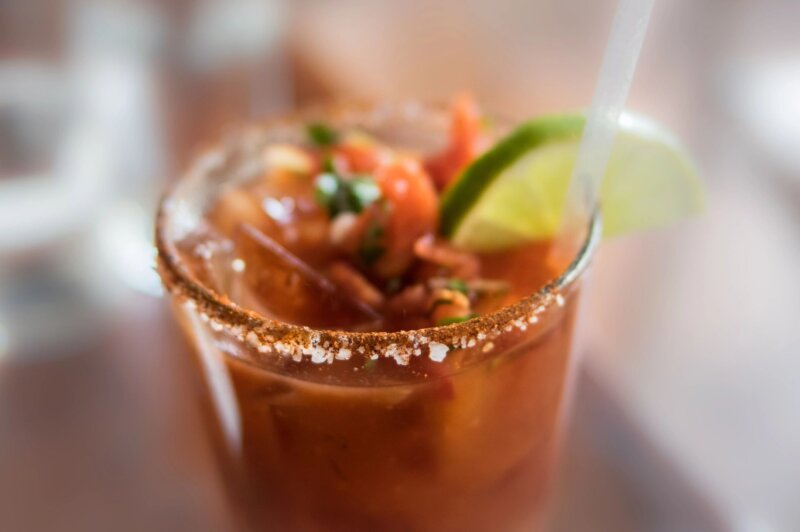Every entrepreneur has dreams of instant success. If you are planning to develop and launch an alcoholic drink product, make sure you are awake and smelling some very strong coffee. There has been a lot of innovation over the past ten years, and some small brands have been snapped up by big players, but this is rare. Most brands don’t stand out enough to make a real difference, and only one in ten new alcohol drinks business ventures will survive beyond two years. It took me several years to get traction with my alcohol brand, without any income, but in the long run I sold it to a very wealthy Dutchman, making it all worthwhile. Here are a few tips to help you make it to the winning ten per cent.
Research
I can’t stress enough how important it is to check out the market before parting with any money. Is your idea unique? Is there a need for it? If it isn’t unique, why would you expect to knock a competitor off the shelf to make way for your product? It’s not going to happen. You need to stand out from the crowd. The alcohol industry is dominated by a few big players who have vast teams, research facilities, influential connections, and the very deep pockets to fund it all. Most new alcohol brands don’t see any return on investment in the first 3-5 years – are you prepared for this journey?
Ask yourself if your product is the one your target audience will cross the road for, and don’t just limit your research to the UK: you need to think global. Any similar, well-established brands overseas will easily be able to blow you out of the water. Learn from mistakes as well as successes. If you know why something didn’t work, it might help you to avoid making the same mistake again.
The future
At the moment, only soft drinks, by law, have to declare the ingredients on their drinks. It’s laughable that there is no information on alcoholic drinks. But it will come, and soon. Transparency is the way forward and the last thing you want is to have to change all your labelling, incurring further costs – do it from the start. Get the recipe right from the outset, list the ingredients and it will save a fortune in the long run, but beware as there are a LOT of calories and sugar in just the alcohol, before you add anything else.
The current voluntary system has seen a few scrupulous drinks manufacturers include QR codes which do list the ingredients in their products, but why should consumers have to rely on these few honest brands? The chances are, the ones who have signed up to this are using good ingredients, but the ones with high sugar and other not so healthy ingredients will ignore it. The trend is for lower alcohol rather than high, plus there is the added issue of duty payable, so the higher the alcohol content the higher the costs, and the greater the retail price.
But times are changing. Yes, we are all becoming more health conscious, but alcohol isn’t going away, we are a nation of drinkers. However, consumers don’t want to spend all week looking after themselves and taking care over what they put in their bodies only to undo all that good work with a few drinks on a Friday night. I believe that alcohol is a massive contributor to obesity in this country. And while no-one in their right mind would ever suggest that alcohol was healthy—neither is Coca Cola and that has to list its ingredients—so it would be wise to understand that people are reading labels more. Tapping into the healthy market is the way forward. Many well established and historically successful brands will suffer hugely when the time comes to make ingredients available to the public – stay ahead of the curve and don’t use cheap ingredients now for a quick win. We have already had a sugar tax and there is plenty of undeclared sugar in alcoholic drinks, so when you are launching your brand, look towards the future, not the past. It’s only a matter of time.
Funding
Creating an alcoholic drink is likely to cost around £50k at the very least. You also have to have enough funds for HMRC to believe in you. If you plan to start trading in alcohol you need to be approved by AWRS (Alcohol Wholesalers Registration Scheme). You cannot sell alcohol in the UK without this registration and if you look like a tin-pot business they won’t give you the time of day.
The soft drinks industry doesn’t have this issue, there is no-one looking over their shoulder looking for paid duty. The best way to save on costs is to seek out a bonded co-packer and a bonded warehouse that has experience in the alcohol industry as this will save an average of 20 per cent wastage lost in production. No-one wants to be paying duty on a drink that’s gone down the drain.
Name
Make sure the name you choose is relevant to your product, something memorable and simple is what you should be looking for and be careful about choosing anything that might be attractive to children with alcohol related products, or the Portman Group, established in 1989 to encourage responsible drinking, will hit you with a ton of bricks.
With ninety per cent of the first sale dependent on branding it’s important to give your brand name some serious thought. And bear in mind, just because something makes your friends laugh doesn’t mean it is going to work. It has to be relevant. Research what the key attractions are to your target audience. Calories are high on the list of importance for consumers now so one good way of cutting down on sugar is to be a skinny version. Sustainability of packaging, brand provenance and a ‘background’ story are all important to the launch of a successful alcohol brand.
Marketing
It’s tempting to give away samples to entice people to stock and buy your product but there are sound reasons not to do this. You will still be paying tax to HMRC on anything you don’t sell so you are instantly making a loss and you definitely can’t give out samples on the street because of the chances of it falling into the hands of children. There is also a tendency for people to say they like anything that they are given free of charge but when you ask them to put their hands in their pockets that’s usually a different matter. People are going to be far more critical of something they have to pay for, and you will find with focus groups that after half-an-hour they will say anything just to go home. Better to come up with a strong marketing plan that centres around knowing your audience.
Summary
Creating an alcoholic drink is like tiptoeing through a minefield. The sale of alcohol is far more restrictive in the UK than anywhere else in the world and yet it’s the most saturated market, and while many entrepreneurs might start out with gusto, many more vanish without trace. Remember these key points:
- Make sure you have something innovative that is focused on the future and is health conscious.
- If you haven’t got enough money, be prepared to lose. It’s a gamble so don’t put in what you are not prepared to let go.
- Know your target market and research it thoroughly. Drinkers over the age of 35 are unlikely to change their habits and younger drinkers between 20-35 tend to have a sweeter palate and will be looking for more modern flavours.
- Research your retailer, just because you like them doesn’t mean they are right for you.
- Give careful thought to packaging. Glass is cheaper but wholesalers hate it because of breakages. Smaller cans with less duty are the most price appealing.
- Focus on retail rather than Hospitality, once the brand gets known you can more into this area through demand, but in the early days it’s nearly impossible to be seen or heard in this area, without spending millions.
Author: Richard Horwell, owner of www.brandrelations.co.uk
https://www.linkedin.com/company/brand-relations-ltd/
https://www.instagram.com/brandrelations/
Richard Horwell
-
Richard Horwell#molongui-disabled-link
-
Richard Horwell#molongui-disabled-link
-
Richard Horwell#molongui-disabled-link






